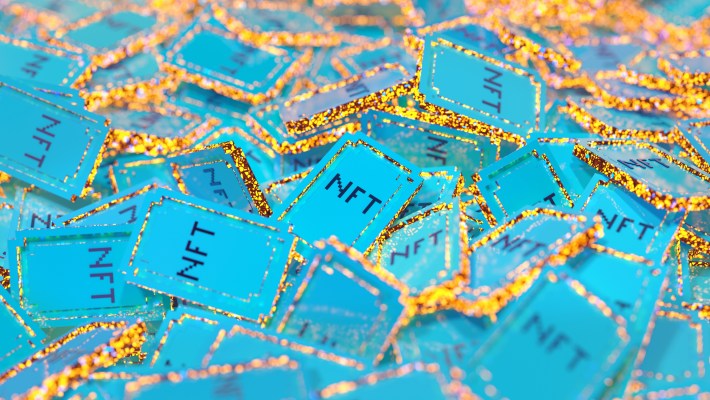The NFT market may be finding its footing again as the market for non-fungible tokens on the Ethereum blockchain surpassed $1 billion for the first time since May 2022.
Amid the recent rebound, NFT marketplace Blur has also bested the once-largest NFT marketplace OpenSea in monthly volume for the third month in a row as the crypto market debates the issue of NFT creator royalties. Earlier this month, Blur also released its highly anticipated token airdrop, which disbursed about 360 million Blur tokens to users, or about 12% of the project’s total supply.
Many speculated that Blur activity would fall off after its airdrop lure concluded. Instead, trading volume on the marketplace continued to grow. The rise of Blur in the NFT market has helped reignite a debate concerning royalties. In previous quarters, OpenSea tried to balance creator royalties as it held the top position for NFT marketplaces, but Blur’s aggressive stance is causing OpenSea to change its tack.
Blur’s NFT marketplace has a 0.5% royalty fee, which many view as so nominal it’s basically nothing.
“I get the sense that Blur is not necessarily anti-royalties,” Yat Siu, chairman of Animoca Brands, said to TechCrunch. “But what Blur is doing, and other marketplaces are doing as well, is trying to capture market share.”
In general, Animoca Brands has “always been an adamant supporter of NFT creator royalties,” Siu said. As a result, the company introduced three NFT licenses that could require payment of creator royalties “as a condition for receiving licenses” of the digital artifacts. Animoca Brands is one of the biggest web3 conglomerates in the space and a massive investor that has backed over 380 companies, including OpenSea, according to its website.
And it’s working — as a result, the platform gained significant market share in recent months as NFT traders want to optimize their sale values.
Blur hit an all-time high for monthly volume at $1.06 billion for February, making up 73.6% of the total $1.44 billion volume across all Ethereum NFT marketplaces, according to data from The Block. (The Block’s data aggregation filters out wash trading — when traders buy and sell items between themselves to artificially raise volumes and prices.)
By comparison, OpenSea, now the second-largest Ethereum NFT marketplace, had $259.75 million in volume for February, the data showed. At its peak, OpenSea had about $4.8 billion in monthly volume in January 2022 but has since seen its overall transaction volume deflate.
“If you look at what’s been happening recently with OpenSea and Blur, obviously that’s a concern broadly speaking in terms of the market and royalty fights,” Siu said. “However, the volume as a result of that has increased tremendously, which means it has brought back another kind of excitement into the space.”
Amid the tension, OpenSea announced on February 17 that it would drop its 2.5% transaction fee to zero for a “limited time.” OpenSea has changed its royalty stance a number of times following feedback from both NFT creators and traders. Last year, royalty fees were typically between 5% and 10%.
As massive NFT marketplaces drop fees, this could be a “slippery slope” that hurts creators in the long term, Siu said.
“Our objection is the fact that this is against all ideas of liberty,” Siu said. Creators should have the ability to set royalty fees instead of leaving the power in the hands of marketplaces, Siu believes.
“Marketplaces or platforms get to dictate what creators can and can’t make, which is basically against the whole promise of web3,” Siu said.
Ultimately, the solution to the NFT marketplaces’ creator royalties war may be a recurring revenue model, Siu said.
“Is it 1%, 2% or is it 5%? That’s what the market will discover, but it’s not 0% because there’s no such thing as no cost,” Siu said. “There’s always a cost.”
As the cliché goes, “If you’re not paying for the product, you are the product,” Siu said. “In the web2 world, we think our access to Facebook and Instagram is free, but it’s not — the true cost is the total invasion of privacy and being heavily monetized.”
The analogy here points to the idea that if NFT marketplaces are not charging royalty fees, they are going to find alternatives to profit off users (selling data, ads, etc.), which may be similar to traditional Web 2.0 methods.
Another solution, which may be harder for marketplaces to stand by as their market share diminishes, is “staying true to communities through respecting royalties, protecting them and finding ways to defend them,” Siu said. “People are willing to pay a premium for companies they believe in.”
Creator royalties should remain decentralized to fit with the ethos of web3, Siu said. “In order for it to be decentralized, we need power to be decentralized.”
Right now, platforms are seemingly controlling the entire market as they set creator royalty fees — or lack thereof.
Creator fees set at zero are “not sustainable,” Siu said. “It’s all about who can outlast the other and basically get to a point where through a combination of innovation and disruptive business practices, you then have a monopoly and then you get to dictate terms.”
But by reducing royalty fees, marketplaces are not accruing the network effect in the hands of the creator, Siu added. “You’re creating a network effect on the platform.”
“In a naturally competitive environment, if a creator has to reduce their royalties to bring more people to buy their assets or to create liquidity, that’s perfectly OK,” Siu said. “That’s for the creator to decide not the marketplace to decide.”
